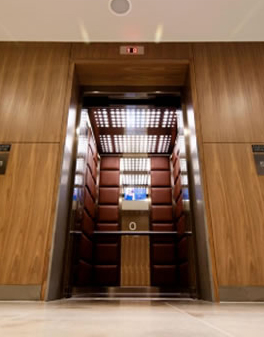
The hydraulic crane was invented by Sir William Armstrong in 1846, primarily for use of loading cargo. They quickly supplanted the earlier steam-driven elevators, exploiting Pascal's law to provide much greater force.
Hydraulics (from Greek ὕδωρ (hydor) 'water', and αὐλός (aulos) 'pipe') is a technology and applied science using engineering, chemistry, and other sciences involving the mechanical properties and use of liquids.
Hydraulic lifts work on a basic principle: to go up, a pump pushes Incompressible oil into the cylinder, which forces the piston upward (which pushes the lift car) up. To go down, the valve opens and oil is allowed to flow back into the reservoir, and is pushed back using the gravitational force of the lift car.
A hydraulic lift uses a combination of electric motor, hydraulic pump and hydraulic cylinders as the drive. The pump is driven by the electric motor, which supplies oil to the hydraulic cylinders. The lifting and lowering movement of the lift in turn is generated by the extension and retraction movement of the cylinders. Electrical valves control the release of the oil for a gentle descent.
The Advantages of Hydraulic Lifts
Hydraulic lifts are used in a variety of different applications. They can be found in automotive, shipping, construction, waste removal, mining, and retail industries as they're an effective means of raising and lowering people, goods, and equipment.
Hydraulic Lifts are used widely in Home Lift, Bungalow Lift, Capsule Lift, Hospital lift, Stretcher Lift, Passenger Lift, Goods Lift, vehicle Lift, etc.
Hydraulic systems are capable of moving heavier loads as well as providing greater force than mechanical, electrical or pneumatic systems. The fluid power system means it can easily cope with a large weight range without having to use gears, pulleys or heavy leavers.
Hydraulic Office Passenger Lift, Maximum Height: 15 meter. Hydraulic elevators are used extensively in buildings up to five stories high.
Get A Quote